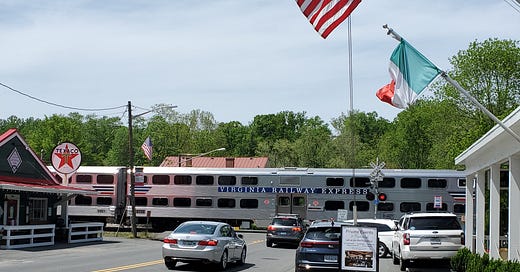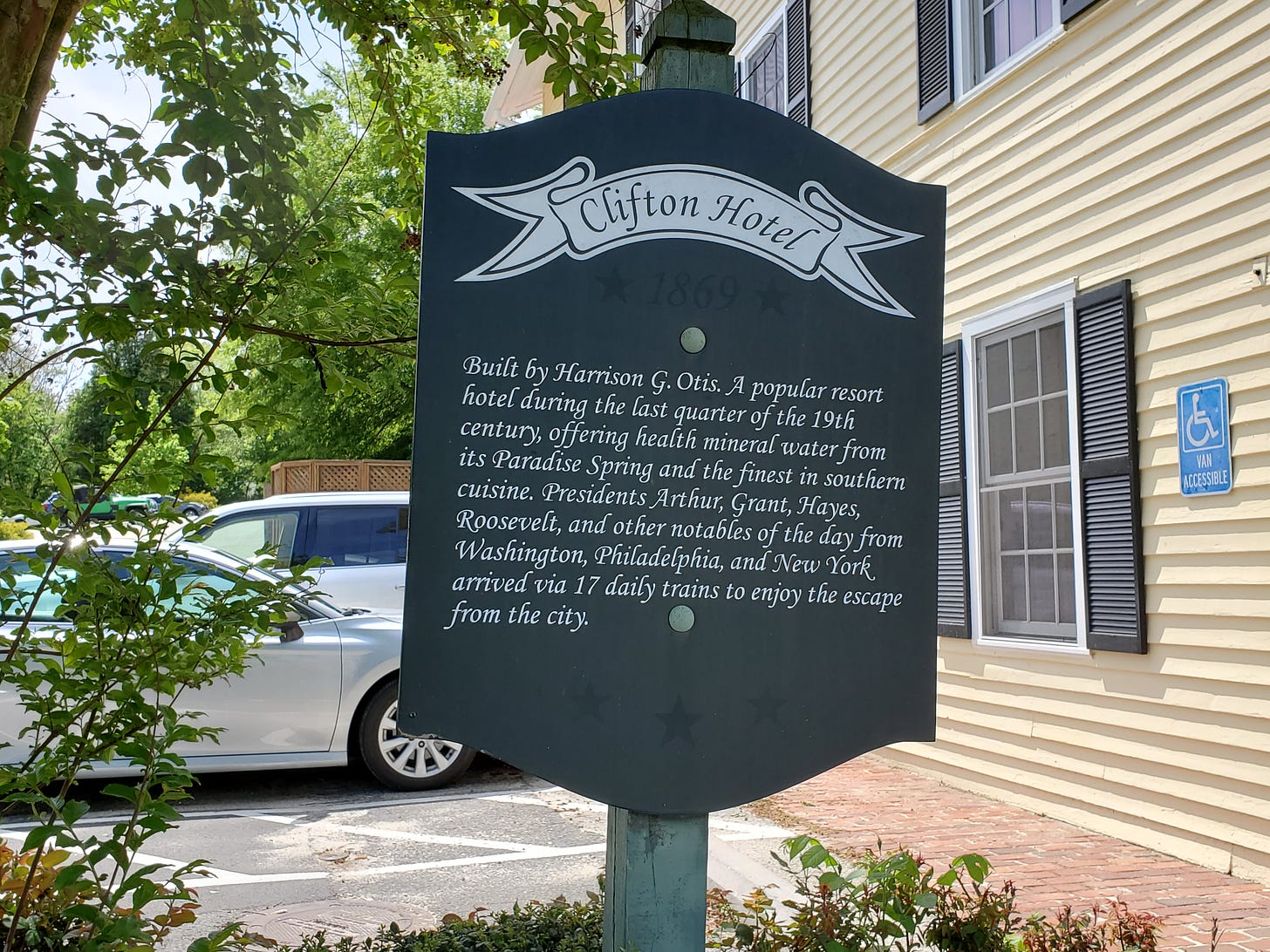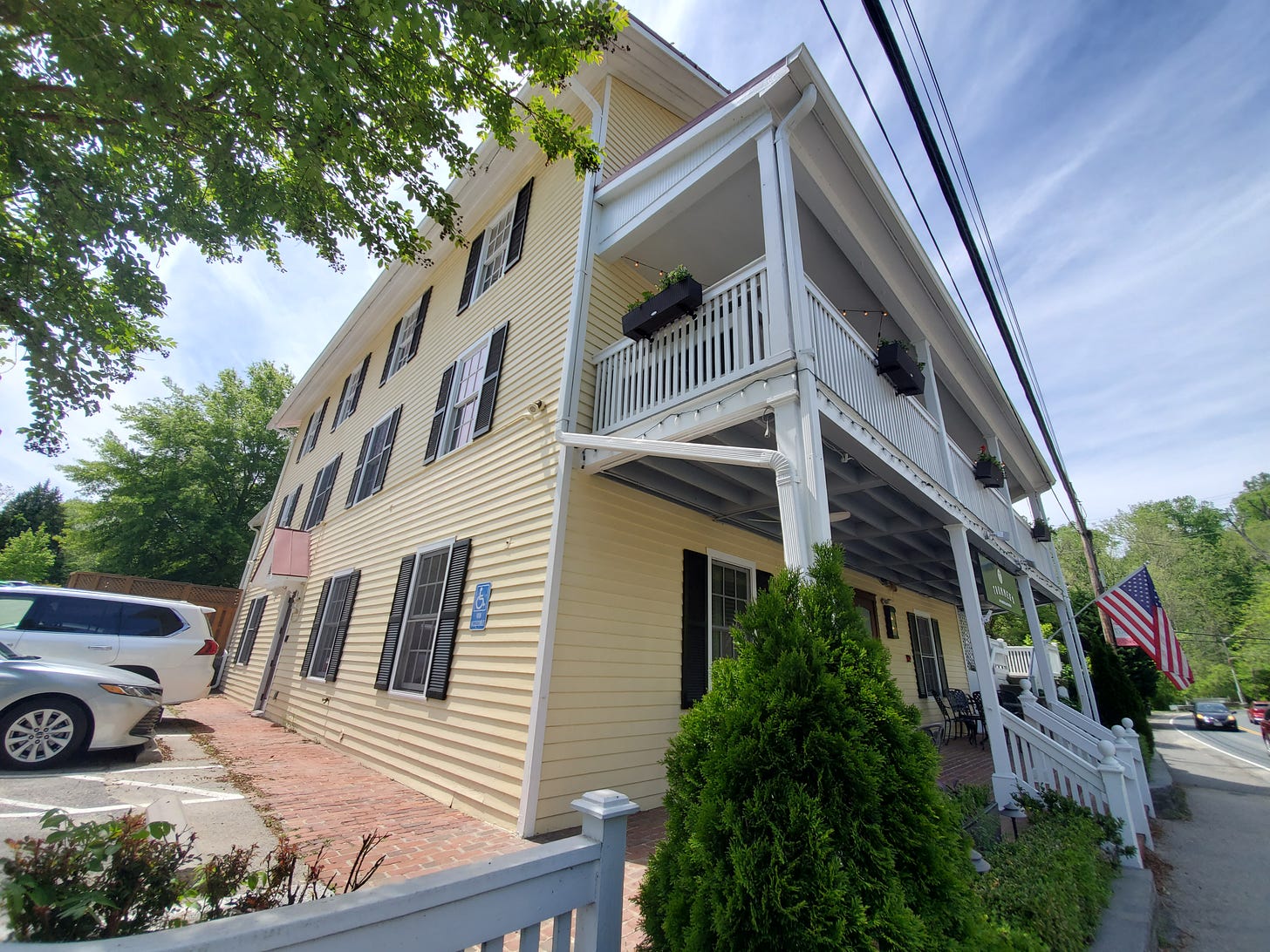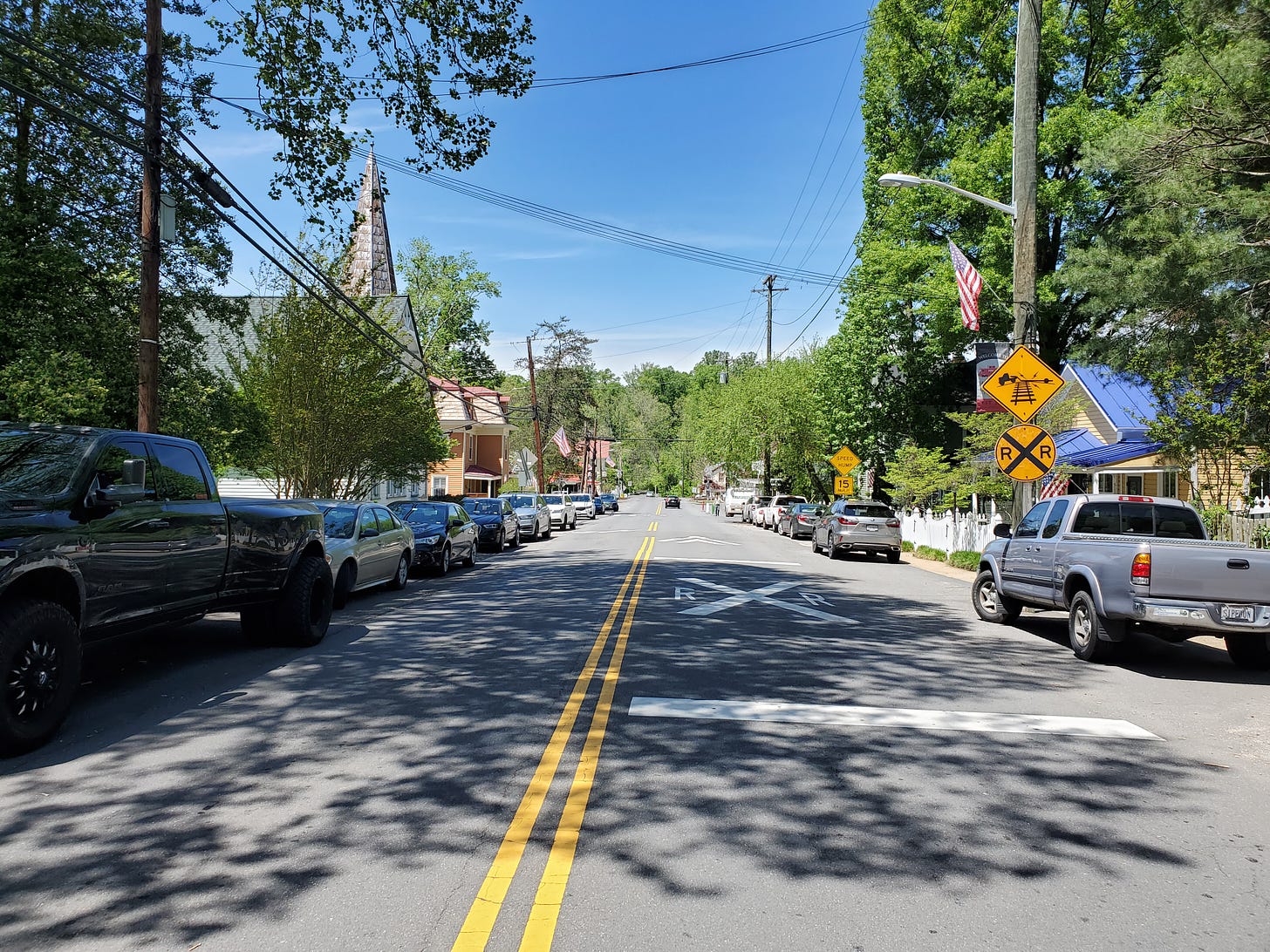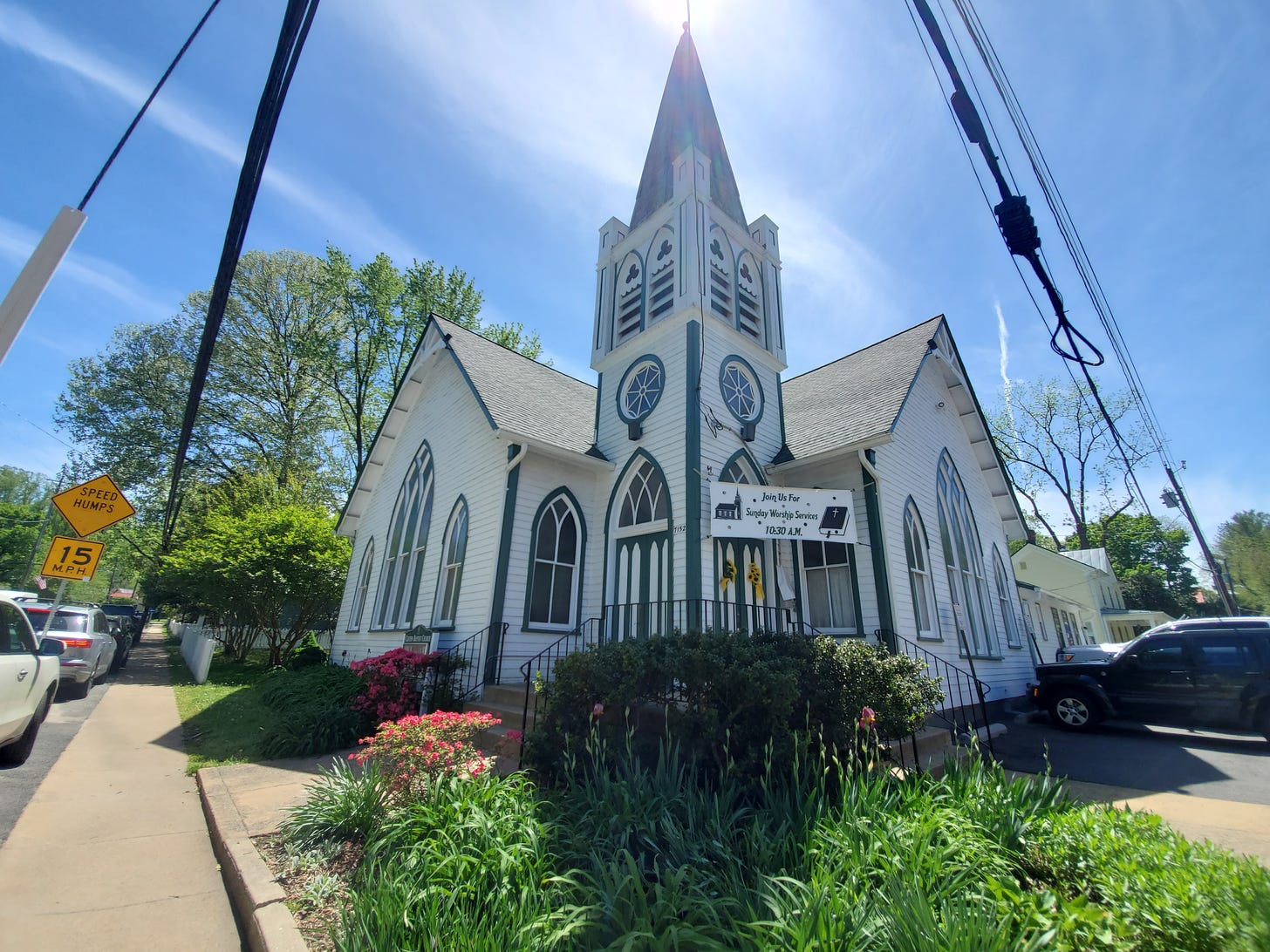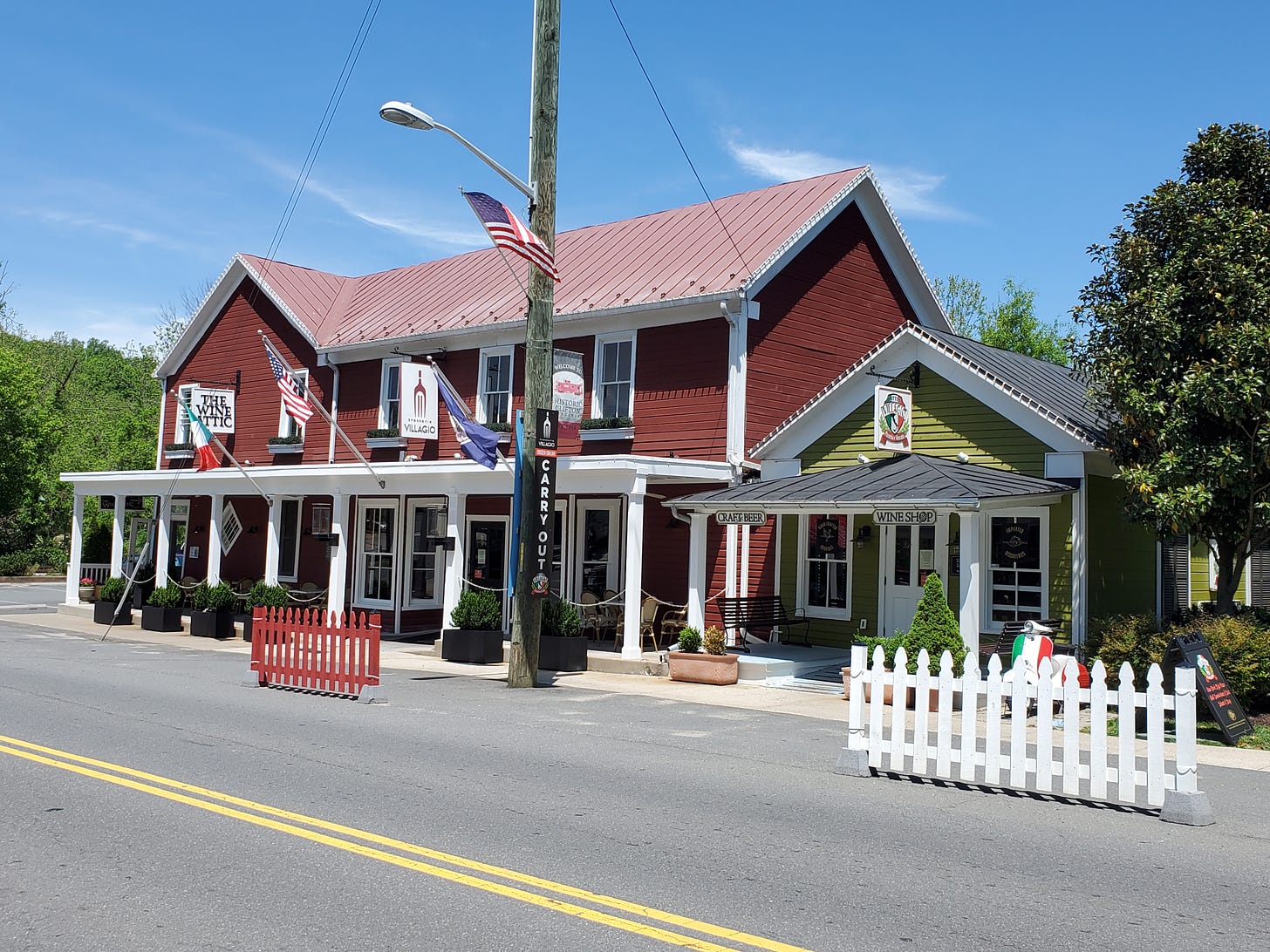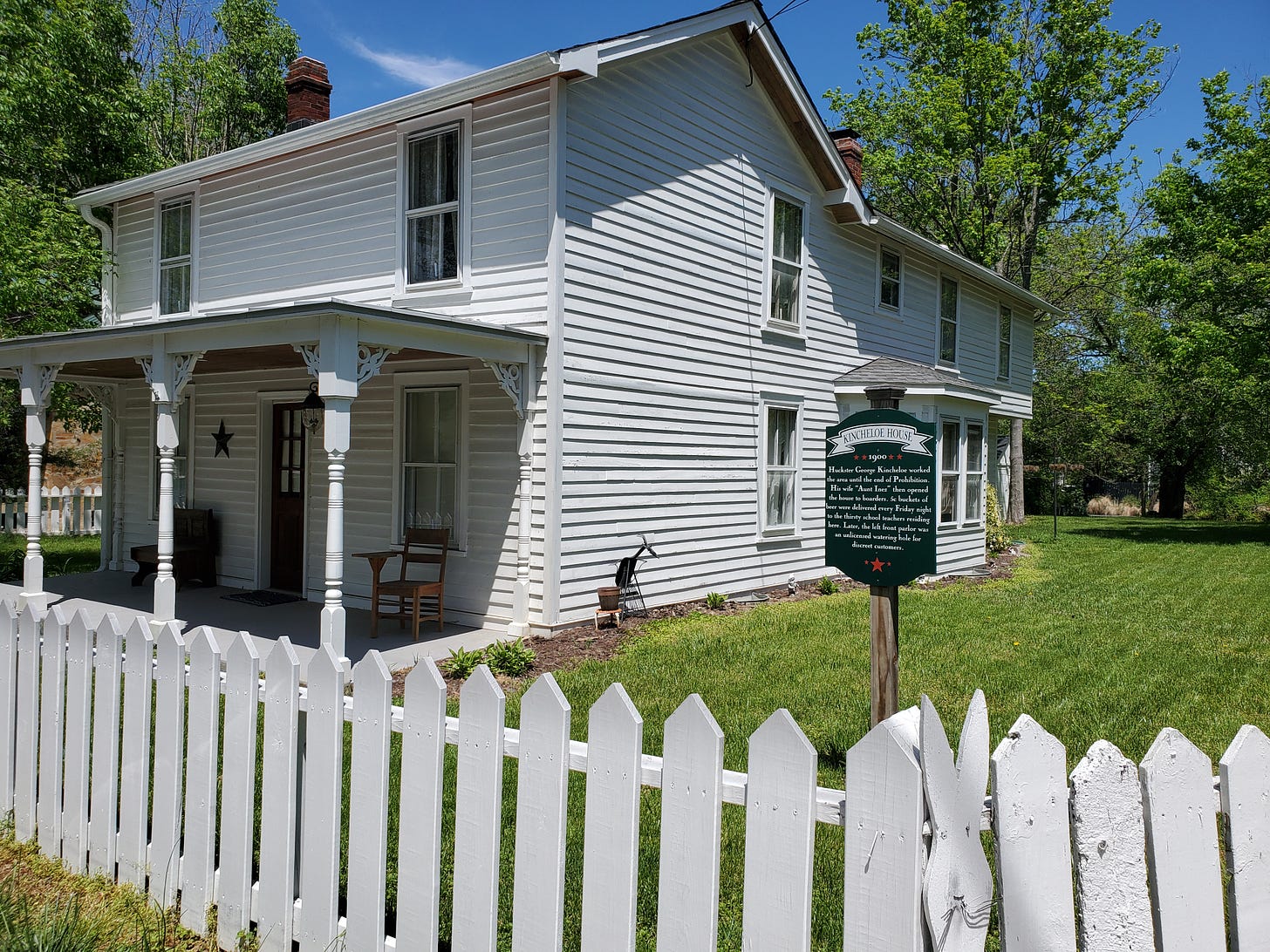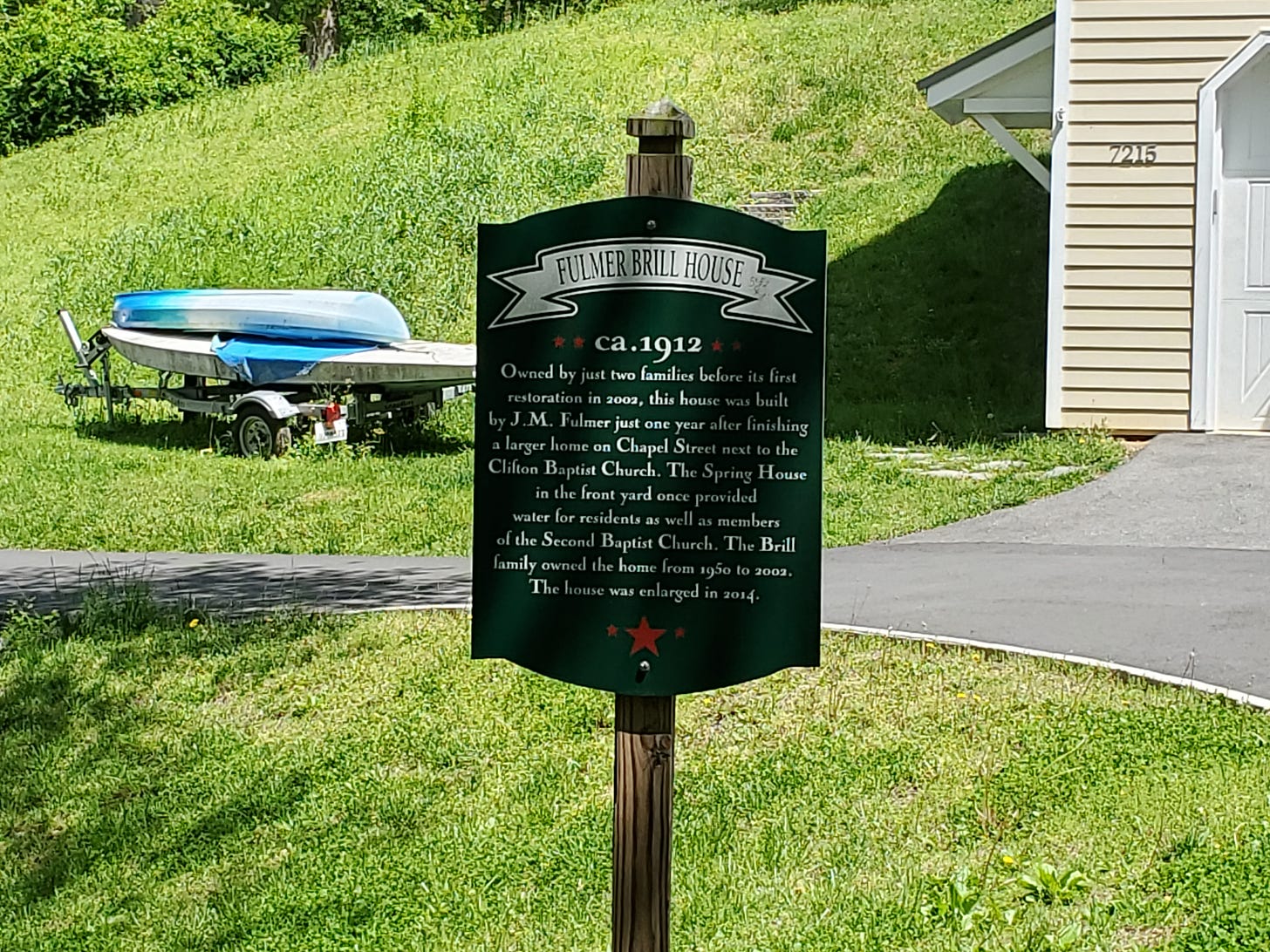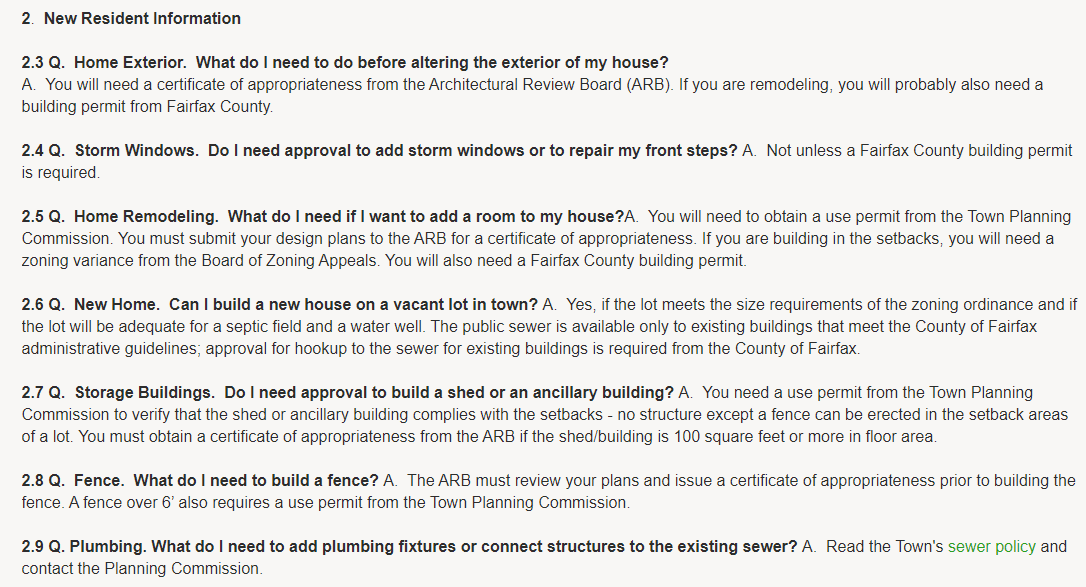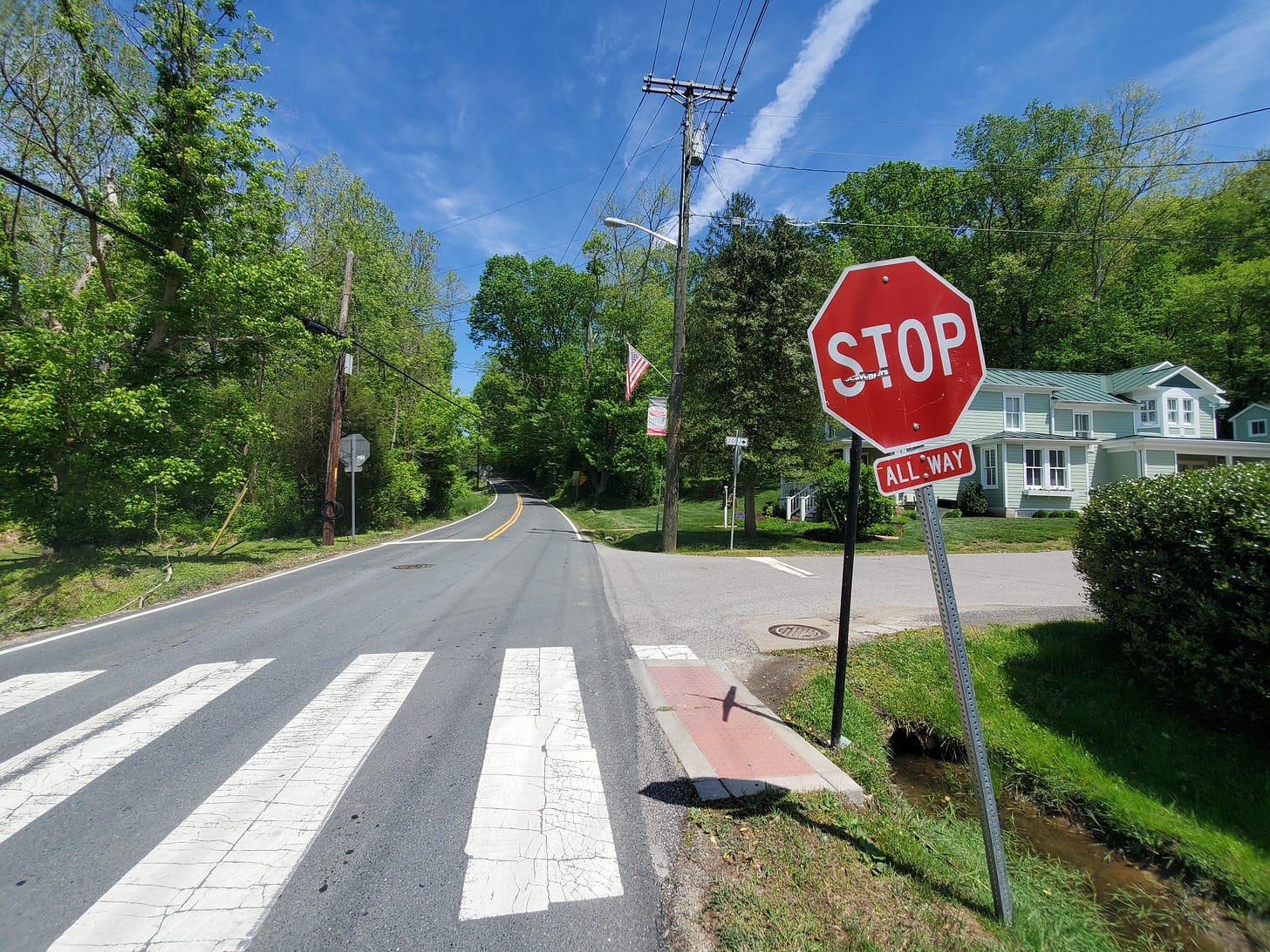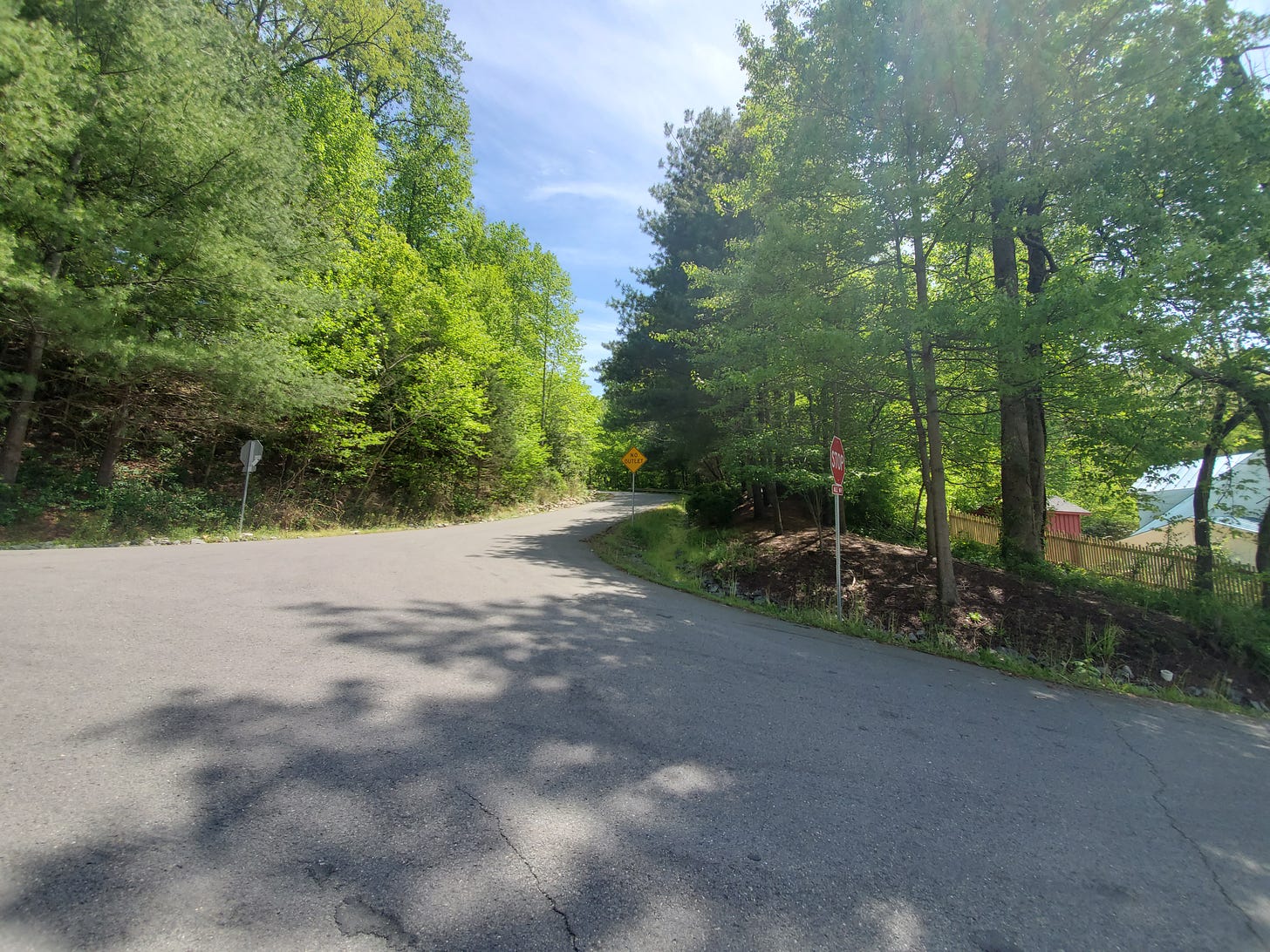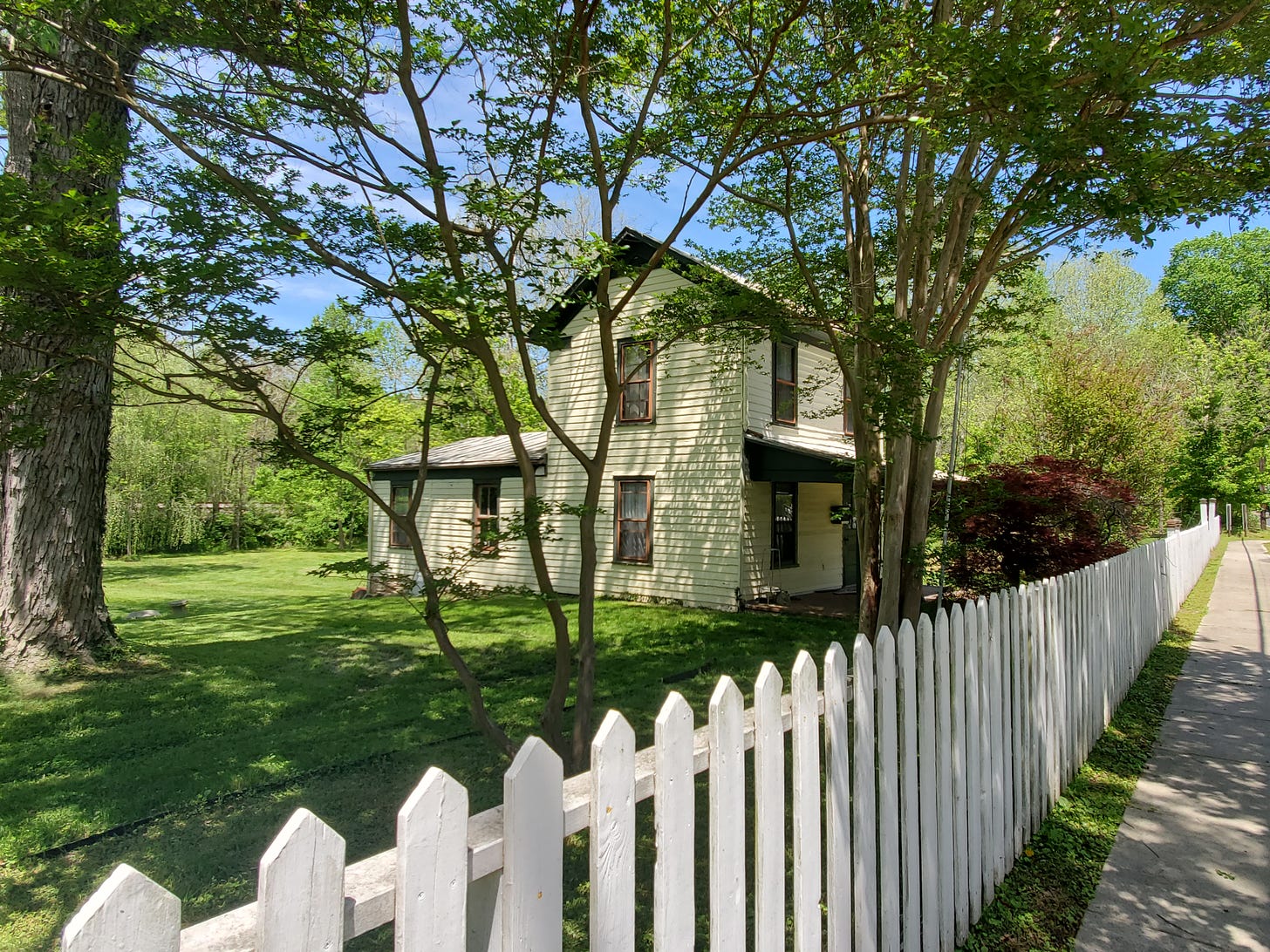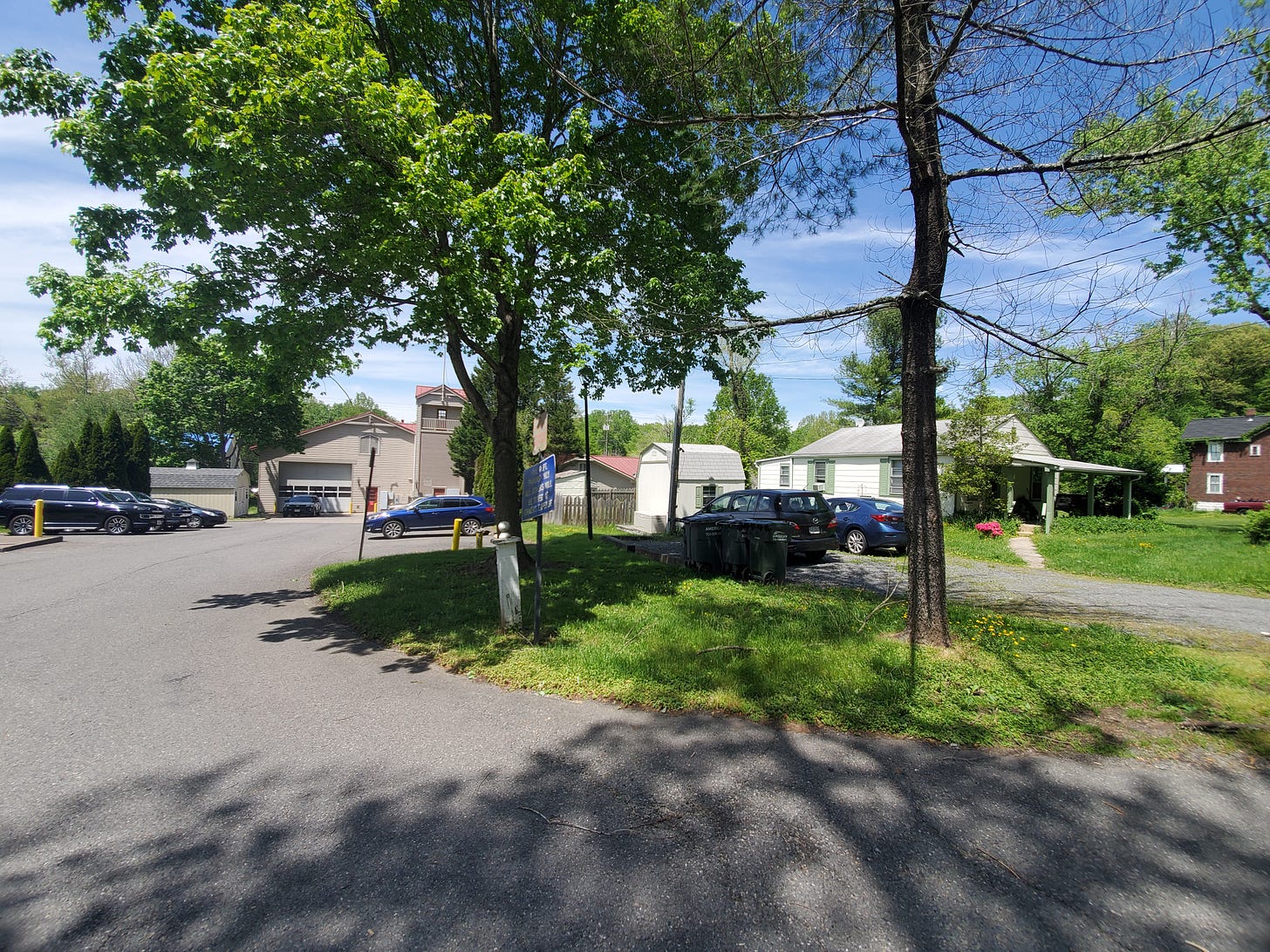300 People and History in Clifton, VA
A tiny town with a dynamic past, and a strict preservation regime
Clifton, Virginia is very small. It’s a 19th century rail town, which the Virginia Railway Express commuter train passes through—but doesn’t stop at. Population? Between 170 and 290 since the late 1800s. Size? “One-quarter of a square mile.”
VRE crosses Main Street
I’m not aware of Clifton because I’ve ever driven through it. Tucked away south of Centreville and east of Manassas, it’s in a southwestern corner of Fairfax County that I barely knew existed. There’s nothing on my mental map there.
It’s interesting, then, that Clifton was home to a grand hotel, and over a dozen train stops a day; visitors included U.S. presidents. Like the tiny village of Bluemont in Loudoun County, once accessible from Washington, D.C. via trolley but now past D.C.’s exurban fringe, Clifton was a resort town. (I wrote about something similar here, in a photo essay on the canal village of Riegelsville, Pennsylvania.)
Clifton Hotel, now Trummer’s American bistro
The reason I’m aware of Clifton is reading about tourism. Northern Virginia Magazine identified Clifton’s ice cream parlor (tying with an Alexandria shop) as serving the region’s best. Virginia’s official tourism site has a page on Clifton, though there isn’t much in the town itself. Another site rounds up over 20 things to do in Clifton and the surrounding countryside, though their claim that “it’s easy to spend an hour or a whole day in Clifton” is stretching it a little.
To some, Clifton probably wouldn’t even qualify as a town. It’s basically a main street and a few blocks of private homes and some historical markers. It can even be a bit uncomfortable to walk around a place like this: quiet and peaceful, but also very private, exclusive, and affluent. Visiting as a tourist almost feels like trespassing. This is the opposite feeling from exploring a place that feels unsafe, with high crime, vacant properties, etc. They feel like no man’s land. In Clifton, the whole town can feel like private property.
Unfortunately, Clifton’s main street is a heavily trafficked major commuter route. At one point, seven cars in a row turned from a street onto the main road—much more traffic volume than I’d expect for a place this size on a weekday afternoon.
A break in Main Street traffic
Clifton lacks large buildings, except for that former hotel. The architecture, however, is varied and interesting. There are a couple of Victorian homes, an ornate church with white siding, a general store. No two buildings look quite alike. This doesn’t produce any aesthetic clashing. It feels natural. Most small towns are like this. (Larger ones also have a more complex mix of building sizes and heights, and this rarely feels out of scale, too.)
Clifton Baptist Church
Take a look at the last photo. That home stretches back quite far, and appears to be made of multiple “pieces,” likely built at different times. This is a tiny example of the kind of incremental development that characterized pre-automobile, pre-sprawl development. Strong Towns highlights this all the time (and I highlighted it here for Strong Towns.)
In some ways, the heavy historic preservation regime that now encases Clifton preserves that incrementally created form. In other ways, it preserves its appearance but renders impossible its essence. Nobody had to get board approvals to add to that house over the decades. Did the additions hurt the town’s fabric? No. (If you’ve taken a tour of Mount Vernon or something similar, you may remember that the original building itself was rarely the same as the final one.) Old buildings are microcosms of old cities.
Clifton’s historical markers are fun, and explain the history and age of the building, and its original use. Exploring the town is like a self-guided tour. However, some are a little weird. Like this, which notes that the home underwent a renovation a few years ago. It’s probably fine to lock a historic town of 300 people in amber. But this is really only a difference in degree, not in the kind, from the way our land-use regime encases almost everything in regulatory amber.
Here’s some information from the town’s website. There’s a Town Council, a Planning Commission, an Architectural Review Board, and a Board of Zoning Appeals. This is still not even most of the information on that page!
Despite its tiny size, Clifton has extremely well-defined, distinct edges. At a certain point along its streets, it just ends. The density here is not particularly high. But from tiny villages to small cities, we used to build in pretty much the same form. Density didn’t go up all that much as population grew—and even very small places had densities higher than subdivision communities. The houses that now surround Clifton are much newer; the town itself is simply the intersections at the center of this image.
The edges of town
Space was used efficiently in places like this, either out of economic necessity or landscape constraints. Back lots and alleys produce a feeling of three-dimensionality compared to the linearity of suburban streets.
Houses back right onto railroad tracks or to the edge of the fire department; the fire department’s small parking lot sits right next to a private driveway; small parking lots are retrofitted into pre-existing spaces between or behind buildings.
Above: Railroad track in background. Below: Fire department next to home.
I could say more, but I’ll leave it here (Substack tells me this post is almost too long). Enjoy the photos, and give Clifton a little visit if you’re nearby!
If you’ve made it to the end, and you like what you’re seeing, please consider a paid subscription to help support what I’m doing here. I’m committed to this newsletter, and, given the audience growth and positive reactions I’ve seen for my work in just two months, am now freelancing full-time for at least the near-to-medium term.
Most posts here remain free—I want this work to be public and shareable. However, beginning this week, I will be making the Saturday post subscribers-only, and there will also be occasional subscribers-only second posts on weekdays. In addition, I have placed most archive pieces more than two weeks old behind the paywall. With one post daily except Sundays, that’s a lot of material!
Related Reading:

